8 Vibrant Perennials to Pair with Spring Bulbs for Seamless Multi-Season Color
If your yard feels like it peaks too early in spring, pairing bulbs with the right perennials is the easiest way to fix it...
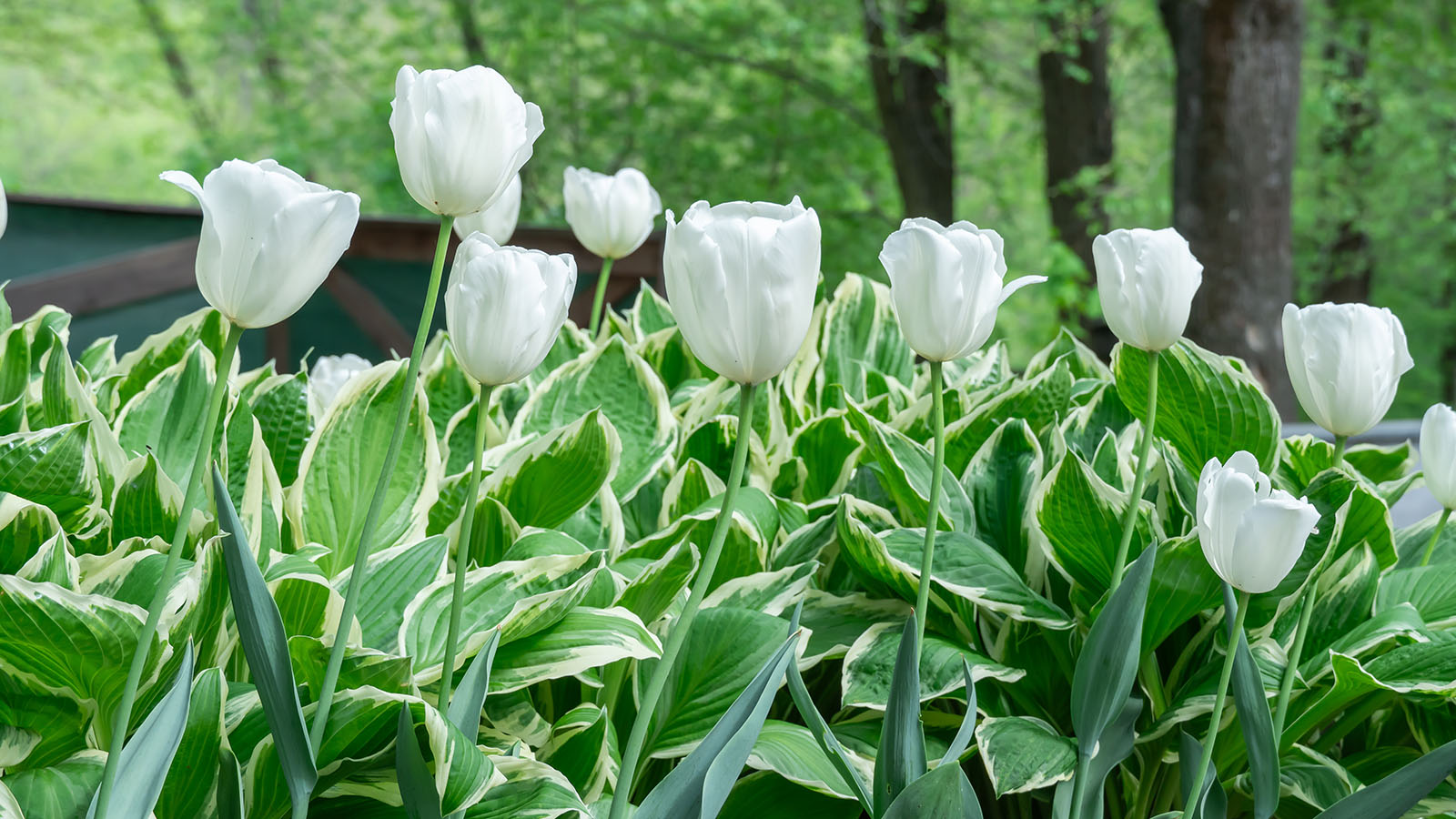

Everyone waxes lyrical about spring bulbs, and fairly so; they always put on a spectacular show – but then, just like that, they disappear, leaving behind floppy yellowing foliage. So, what are the best perennials to pair with spring bulbs?
Yes, that fading phase is never fun. With a little strategic planning, though, you can make it an invisible transition by pairing your tulips, daffodils, and hyacinths with hardy plants that will carry the display forward into summer and fall.
The core idea is simple: let bulbs start the show, then let your perennials to take over. The right combinations don’t just hide dying bulb leaves; they create long-lasting layers of texture, color, and pollinator activity through multiple seasons. Categorized by bloom time and USDA Hardiness Zones, then, here are some of the most popular perennial companion plants.
For Early Spring Bulbs
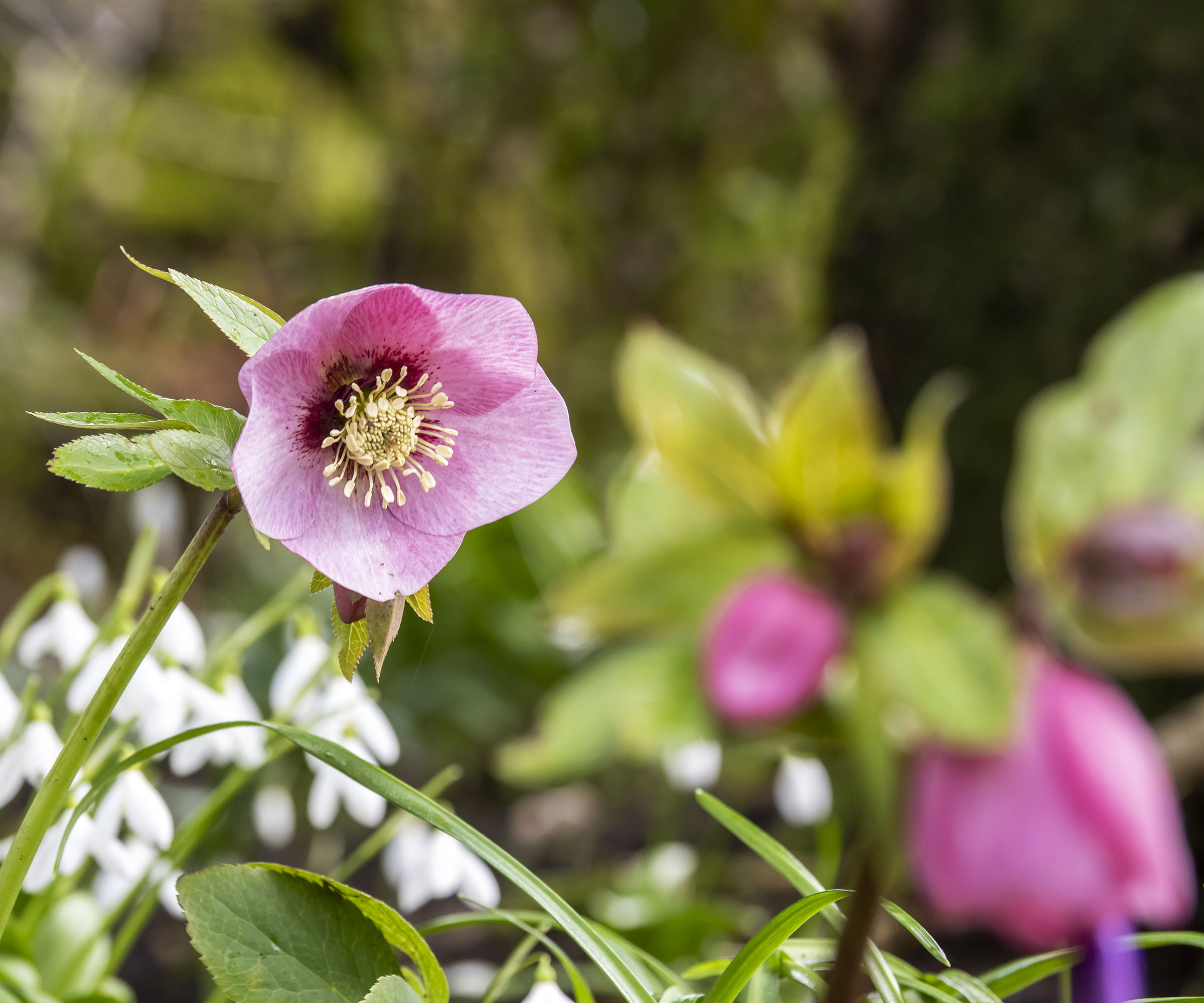
Trying to suss out the best perennials to pair with spring bulbs that bloom very early in the year, such as snowdrops? The trick is to choose those that will come into their own around the same time those bulbs begin to die back...
- Perfect in Zones 3–9, creeping phlox spreads into a colorful groundcover just as spring bulbs fade. Pick up a trio of live creeping phlox plants from Amazon, then, and set to work on a little layered planting.
- Another of the best perennials to pair with spring bulbs is lungwort. Its silver-flecked leaves add contrast to floral displays in Zones 3–8… even after those very early flowers are gone. You can easily pick up a Lungwort Plant (Pulmonaria officinalis) from Amazon.
- Evergreen foliage and early blooms, lenten rose flowers (or hellebores) pair beautifully with snowdrops in Zones 4-9. And, luckily, you can pick up 3 Containers of Mixed Lenten Roses from Amazon, ready for fall planting.
For Mid-to-Late Spring Bulbs
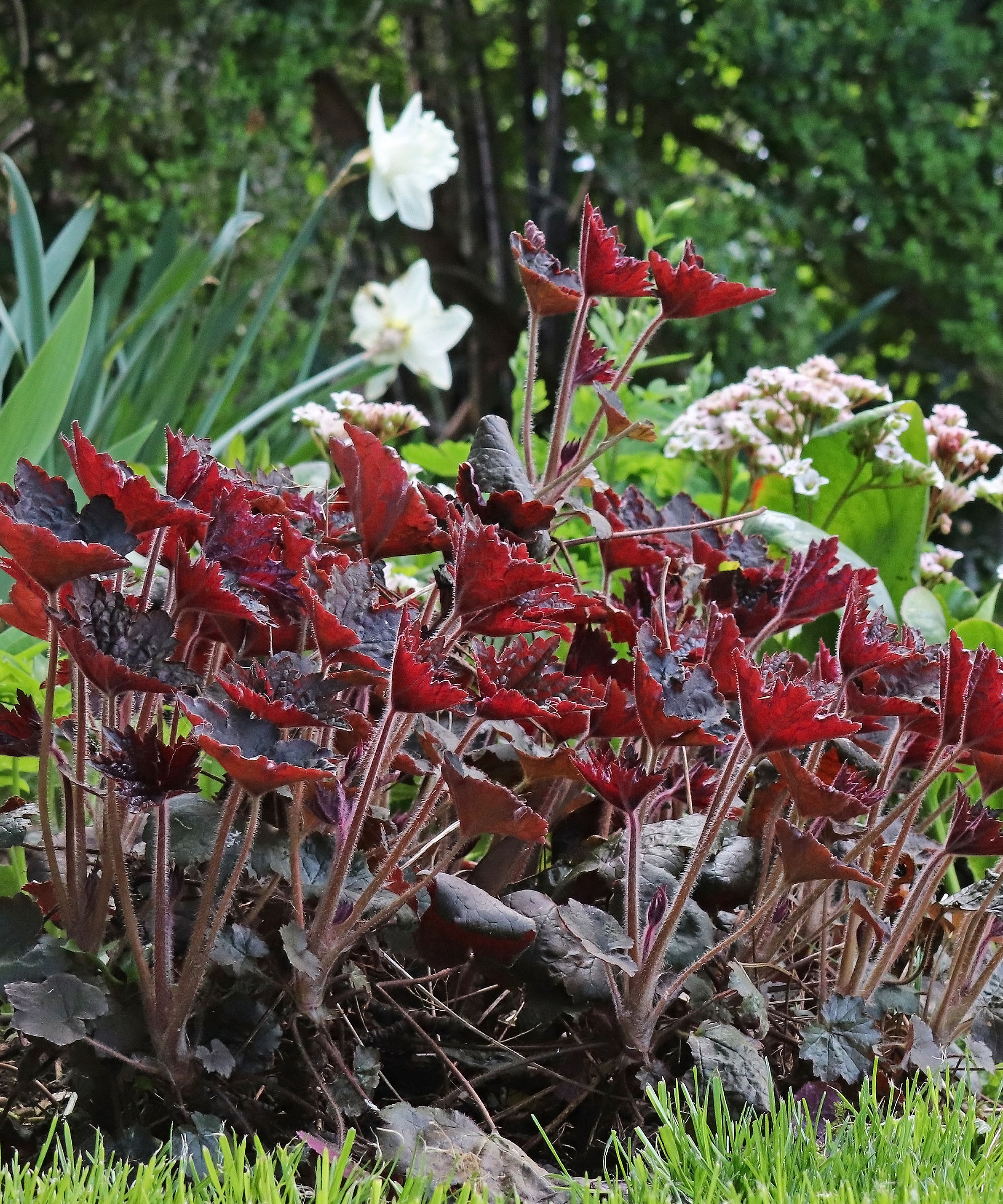
Whether you're worried about the fading blooms of your hyacinths, daffodils, alliums, or something else entirely, don't despair; choosing the right perennials should help to fill in any unsightly patches when those spring bulbs meet their maker...
- The large leaves of a hosta are perfect to hide a dying bulb’s foliage completely, especially in Zones 3-9. Be sure to invest in, then, a Pack of Mixed Heart-Shaped Hosta Bare Roots Plants from Amazon, stat.
- If you want year-round foliage in purple, bronze, lime, and more, and you live in Zones 4-9, then don’t sleep on coral bells (heuchera); they really are one of the best perennials to pair with spring bulbs. Amazon's Perennial Farm Marketplace Heuchera x 'Blondie' is on sale right now, so be quick!
- With blue spring flowers followed by golden fall color, blue star (amsonia) is another brilliant perennial to pair with spring bulbs in Zones 4-9. If you pick up a Threadleaf Blue Star from Amazon, though, just take care to plant it in full sun.
For Late Interest After Bulbs Are Long Gone
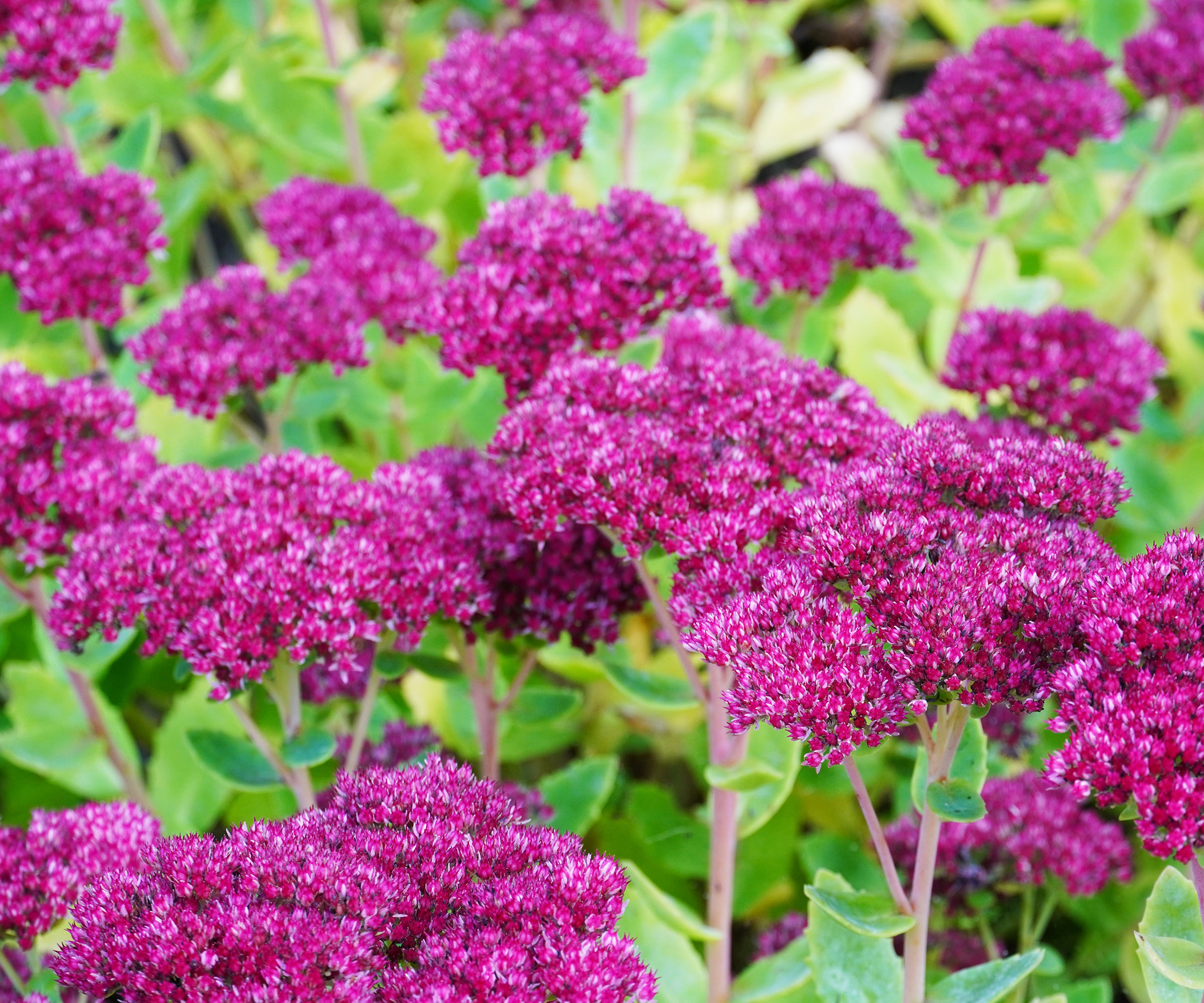
The sad thing about spring bulbs is that they really don't last forever. Oh sure, they pop up year after year to cheer us with their bright blooms – but, once spring is over, that's that. Finito. Done.
To keep your garden looking its beautiful best, then, be sure to plant some of those hero perennials that provide some much-needed interest later in the season...
Sign up for the Gardening Know How newsletter today and receive a free copy of our e-book "How to Grow Delicious Tomatoes".
- With succulent stems and bold fall flower heads, stonecrop (sedum) is another perennial that pairs well with spring bulbs in Zones 3-9. Something like Sedum Rock 'N Round 'Popstar' Stonecrop from Amazon should do the job nicely.
- If you’re in Zones 3-8, then you’ll likely already know that asters provide crucial late-season color for pollinators. Make like a pro and use Aster laevis 'Bluebird' (currently in the Prime Day sale) for light blue daisy-like flowers all season long.
FAQs
Can you plant spring bulbs with perennials?
You can plant spring bulbs with perennials, but there's a knack to it: you need to have a go at layered planting.
This essentially means that you plant your bulbs around 6–8 inches deep in fall, then add perennials with shallow roots directly above or around them. Avoid varieties that require deep digging later.
Finally, take care to allow perennials to grow over emerging bulb foliage once flowers fade, and resist the urge to cut bulb leaves early.
How to have a colorful garden all year round?
The easiest way to have a colorful garden all year round is to mix spring bulbs with perennials for plenty of visual interest throughout the different seasons.
Try mixing, then, tulips, heuchera, and sedum for bold spring color, rich summer foliage, and punchy fall structure. Daffodils, hellebores, and hostas, meanwhile, is a classic woodland look that takes your yard from March to September.
Finally, mixing something like alliums, amsonia, and asters means your garden will enjoy a blue to purple progression from spring through fall.
Whichever you opt for, be sure to group bulbs and perennials in drifts rather than single rows; this helps them blend naturally and creates stronger visual impact.
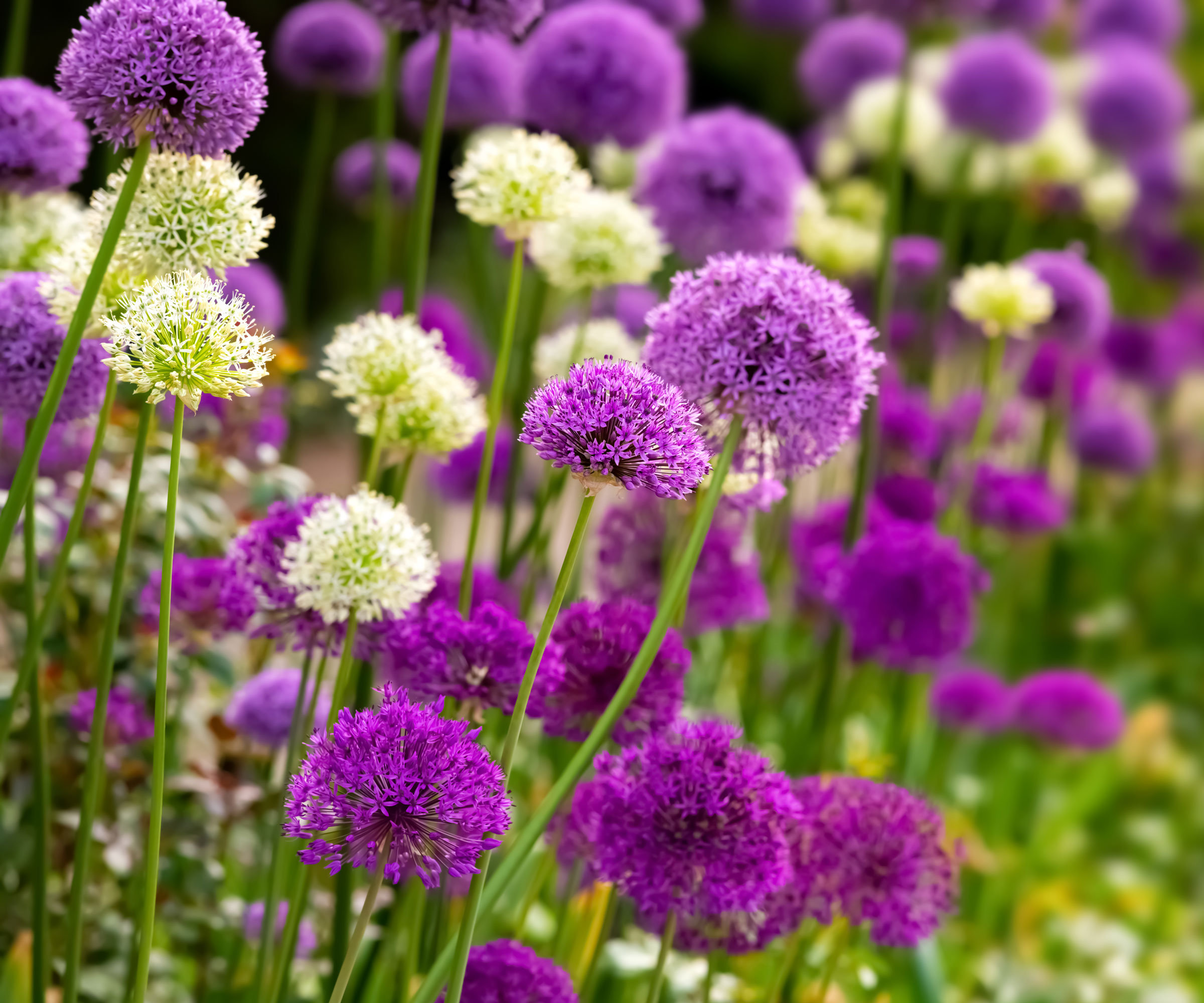
If your yard feels like it peaks too early in spring, pairing the best perennials with spring bulbs is the easiest way to fix it. Instead of bare patches and wilted stems, you’ll get a seamless seasonal handoff from snowmelt to first frost.
Just take care to choose combinations that match your USDA Zone, plant generously, and let the plants do the layering for you. It's a low effort job for maximum reward, as your spring bulbs won’t just bloom next year: they’ll blend beautifully.

Kayleigh is an enthusiastic (sometimes too enthusiastic!) gardener and has worked in media for over a decade. She previously served as digital editor at Stylist magazine, and has written extensively for Ideal Home, Woman & Home, Homes & Gardens, and a handful of other titles. Kayleigh is passionate about wildlife-friendly gardening, and recently cancelled her weekend plans to build a mini pond when her toddler found a frog living in their water barrel. As such, her garden – designed around the stunning magnolia tree at its centre – is filled to the brim with pollinator-friendly blooms, homemade bird feeders, and old logs for insects to nest in.